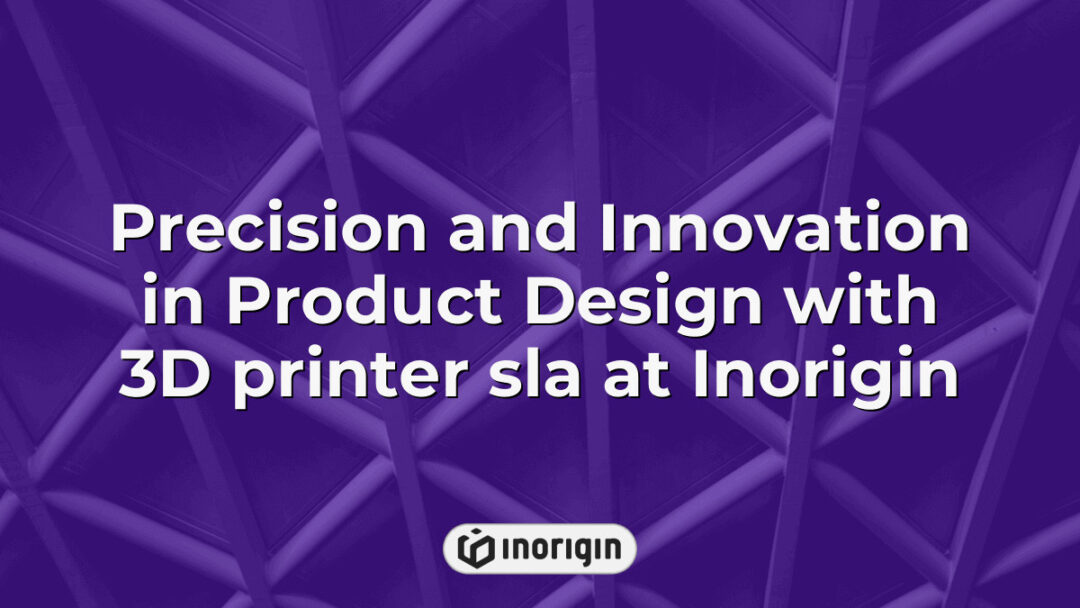In the ever-evolving landscape of modern manufacturing and consumer culture, industrial design schools serve as the crucibles in which creativity and functionality are forged into innovative solutions. Much like a sculptor chisels away at a block of marble to reveal the masterpiece within, these institutions shape aspiring designers, equipping them with the necessary skills and knowledge to navigate the complexities of product development and user experience. As technology advances and societal needs shift, the significance of industrial design education becomes increasingly paramount, fostering a new generation of thinkers who will redefine the way products are conceived, crafted, and experienced. This article delves into the pivotal role of industrial design schools, exploring their curricula, teaching methodologies, and the impact of their graduates on various industries.
| Aspect | Key Takeaway |
|---|---|
| Importance of Industrial Design Schools | Industrial design schools combine creativity with functionality to equip students with skills essential for innovative product development and user-centered design. |
| Top Global Institutions | Renowned schools like the Rhode Island School of Design and Royal College of Art lead in advancing industrial design education with comprehensive and industry-relevant programs. |
| Selecting the Right School | Evaluating factors such as curriculum alignment with industry trends, faculty expertise, acceptance rates, and location is critical for choosing a program that meets career goals. |
| Core Curriculum and Skills | Programs emphasize ergonomics, materials science, sustainability, and advanced design software to prepare students for complex, real-world design challenges. |
| Career Opportunities | Graduates have diverse options including product design, user experience, sustainable development, and roles in evolving sectors like healthcare and automotive design. |
| Alumni Impact | Notable alumni demonstrate how industrial design education fosters creativity and adaptability, contributing to innovation across multiple industries. |
| Financial Support | Scholarships, grants, and industry internships provide financial assistance and practical experience, making industrial design education more accessible and career-oriented. |
Top Industrial Design Schools Around the World
When considering the top industrial design schools around the world, one might jest that the competition is as fierce as a gladiatorial contest, where the victor claims not only glory but also a coveted spot in the halls of design fame. Institutions such as the College for Creative Studies in Detroit and the Rhode Island School of Design (RISD) emerge prominently, asserting their influential roles in shaping the minds of future designers. The College for Creative Studies, with its rigorous curriculum and strong ties to the automotive industry, offers students a unique environment that fuses creativity with practical application. Similarly, RISD has long been revered for its comprehensive approach, integrating traditional craftsmanship with cutting-edge design thinking; students there often report a culture of innovation that encourages out-of-the-box solutions. Transitioning from the North American scene, one cannot overlook institutions in Europe, like the Royal College of Art, which likewise contributes to the conversation around design education on a global scale. Thus, as aspiring industrial designers navigate their educational choices, a clear understanding of these esteemed schools’ offerings becomes crucial, for the institutions not only provide knowledge but also prepare individuals to tackle real-world challenges in design.
Key Factors to Consider When Choosing an Industrial Design School
Choosing an industrial design school involves a multifaceted evaluation of various criteria, each playing a significant role in shaping a student’s educational experience. Acceptance rate, for instance, serves as a key indicator of a school’s selectivity and can influence a prospective student’s determination of their acceptance chances; ambitious candidates might seek out institutions with lower acceptance rates as a mark of prestige. Furthermore, one should consider the school’s curriculum; it’s essential that the programme aligns with industry standards and trends, which can often be assessed through alumni success rates and employer feedback. Additionally, the reputation of the faculty and access to advanced resources—such as cutting-edge design software or collaborative projects with corporations—could greatly impact the quality of education received. Location is also a fundamental factor; being situated in a metropolitan area may provide students with networking opportunities and internships. Ultimately, many aspiring industrial designers may find that examining these elements holistically, rather than in isolation, affords a clearer picture of which higher education institutions best suit their individual goals and aspirations.
Curriculum and Essential Skills Taught in Industrial Design Programs
The curriculum in industrial design programmes focuses on a diverse array of subjects designed to equip students with essential skills for the field. Students typically engage in foundational courses that cover the principles of designing products, which may include the study of materials, ergonomics, and aesthetics. Projects often require a blend of creativity and technical knowledge, fostering innovation through hands-on experiences and collaborative efforts. For instance, students might work on actual product prototypes, utilising software tools such as CAD (Computer-Aided Design) and prototyping technologies. Additionally, courses in user experience and human-centred design are integral, guiding students to understand consumer needs and behaviours, thereby allowing for the development of functional and appealing products. In the context of an industrial design major, students also explore sustainability practices; this growing emphasis reflects a shift in industry demands towards eco-friendly design solutions. By evaluating various design methodologies and industry standards, graduates emerge well-prepared, adept at tackling modern challenges in the design sector while embracing new innovations and technologies. The combination of these elements ensures that programmes remain relevant and responsive to market needs, producing professionals equipped to navigate the complexities of contemporary industrial design.
Career Opportunities After Graduating from Industrial Design Schools
In the sphere of industrial design, graduates find themselves greeted by a myriad of career opportunities, each shimmering with promise and potential. This field, which harmoniously intertwines creativity with functionality, reveals paths spanning from product design to user experience; such versatility appeals to both budding designers and established professionals seeking new challenges. Significantly, the emphasis on sustainability in modern industrial design not only reflects a growing awareness of environmental responsibility but also enhances marketability in an increasingly eco-conscious industry. Industries are looking for innovative thinkers to help navigate the complexities of building a sustainable future; thus, roles in sustainable product development and circular design are on the rise, highlighting a crucial demand for skilled graduates. Many find opportunities in automotive design, consumer electronics, or even in the realms of furniture and textile design, where artistic vision meets practicality, driving forward the evolution of everyday items and experiences.
Interestingly, the career trajectories for those graduating from industrial design schools vary greatly, accommodating personal interests and industry needs alike. Emerging technologies, such as 3D printing and virtual reality, are reshaping job roles, necessitating a continuous quest for knowledge and adaptability. Those who possess a robust foundational skill set are ideally positioned to enter sectors ranging from healthcare design—where user-centred solutions improve patient experiences—to packaging design, which enhances branding while considering environmental implications. As the industrial design landscape evolves, the focus on user experience consistently informs how products are developed and perceived; thus, the marriage of aesthetics with functionality serves as the bedrock of this profession. Equipped with these proficiencies, graduates are not only prepared to excel in their chosen paths but also contribute to defining a sustainable future through innovative design practices, ultimately enriching both their careers and the world at large.
Student Experiences and Success Stories from Notable Alumni
Industrial design schools serve as crucibles for creativity and innovation, echoing the Renaissance guilds where artisans honed their crafts. Within these institutions, students engage with multifaceted design principles that shape not just products, but also user experiences and societal needs. Various notable alumni who have emerged from top design programmes, such as the Royal College of Art in London or the Rhode Island School of Design in the United States, demonstrate the profound impact of their education on both personal and professional trajectories. These individuals have made significant contributions across industries, from automotive design to consumer electronics, showcasing the extensive applicability of skills acquired during their studies. Student experiences within these programmes often include collaborative projects, internships, and exposure to cutting-edge technology, all of which enhance the educational process. By examining the achievements of graduates, a clearer understanding emerges of how these educational environments foster innovation and encourage risk-taking, leading to successful careers in various design sectors. Ultimately, the success stories inspired by industrial design schools are indicative of the potent combination of education, creativity, and market relevance.
Frequently Asked Questions
What is the typical duration of an industrial design program?
The duration of an industrial design program can often seem astonishingly varied, eluding many with its seemingly endless pathways. Typically, one can expect that these programs extend over a range from three to four years for undergraduate studies, aligning with the increasing depth of knowledge required in today’s fast-evolving design field. Advanced degrees, such as Master’s programs, usually require an additional one to two years, which only compounds the commitment needed from aspiring designers. As institutions across the globe adapt to the rapid pace of technological change and the demands of the industry, some programs may even stretch beyond this timeframe, offering dual degrees or specialisations that further enrich the educational experience. It becomes apparent that the complexity of industrial design, requiring mastery over multiple disciplines—like ergonomics, aesthetics, and sustainability—necessitates an investment of time that can interest or overwhelm, depending on one’s perspective. Emphasising the need for practical experience alongside academic knowledge, many programs incorporate internships or cooperative education, drawing students closer to real-world applications that further extend their educational timelines. Thus, what initially appears as a straightforward answer to the duration of an industrial design program reveals itself as a multifaceted question—one that reflects the escalating challenges and enriched experiences embedded within the discipline.
Are there online options for studying industrial design?
The availability of online options for studying industrial design has expanded significantly in recent years, largely influenced by technological advancements and changing educational paradigms. Traditionally, industrial design programs were predominantly held in physical classrooms, necessitating hands-on interaction with materials and tools. However, with the rise of online education, many institutions now offer hybrid or fully online programs that retain the rigor of traditional curricula while providing greater flexibility. This shift has presented various challenges, such as maintaining the quality of design education; yet, it encourages engagement with a diverse global student body, allowing for a richer exchange of ideas. Furthermore, the development of innovative digital design tools enables students to simulate practical applications that were once constrained to physical environments.
- Access to reputable institutions offering online degrees
- Flexibility to balance studies with other commitments
- Utilisation of advanced digital design tools for practical learning
- Opportunities for networking with a global cohort of students and professionals
Evolving educational methods have rendered remote study a viable alternative for those pursuing a career in industrial design. The nuances involved in online learning – from project-based assessments to collaborative platforms – necessitate that prospective students evaluate the specific offerings and teaching methods of each programme carefully. As industries increasingly value adaptability and diverse skill sets, the potential of online education in shaping competent industrial designers continues to emerge as a significant factor in future career trajectories.
What financial aid or scholarship opportunities are available for industrial design students?
The journey through financial support for industrial design students is akin to navigating a labyrinthine corridor, where various funding options reveal themselves at every turn. Scholarships and grants, often funded by educational institutions, professional organisations, and private entities, form a primary avenue for students seeking financial relief. For instance, the Industrial Design Society of America frequently offers scholarships to promising design students, aiming to alleviate the financial burden associated with tuition. Meanwhile, federal financial aid programs, such as the Free Application for Federal Student Aid (FAFSA) in the U.S., serve as a crucial lifeline, enabling many to secure low-interest loans or need-based grants. Across the pond, UK students may find support through the Student Loans Company, which provides loans based on household income, thus aiming for equitable access to education. Furthermore, industry-specific internships also present a pathway not just for hands-on experience, but often for stipends or tuition reimbursement, highlighting the intertwined nature of practical work and financial assistance. All these avenues collectively make education in industrial design more accessible, ensuring that financial constraints do not hinder the pursuit of creative and innovative careers.
Conclusion
In summary, the journey through industrial design schools ignites passion for creativity, cultivates essential skills for innovation, and opens doors to diverse career opportunities. The stories of successful alumni serve as inspiration, reinforcing the transformative power of education in shaping designers who contribute meaningfully to society and redefine the future of design.
Related posts:
- How Graduates Thrive Through Audio Engineering and Music Production Schools with Industry Connections and Career Pathways
- Audio Engineering and Music Production Schools with Industry-Certified Curriculum and Career Pathways
- Career Paths and Essential Skills in a Music Production and Sound Engineering Degree
- Career Opportunities and Advanced Skills from a Music Production and Engineering Degree
- USC Product Development Engineering Driving Career Success Through Industry Collaboration and Innovation
- Career Paths and Curriculum Highlights of a Music Production and Sound Engineering Degree




